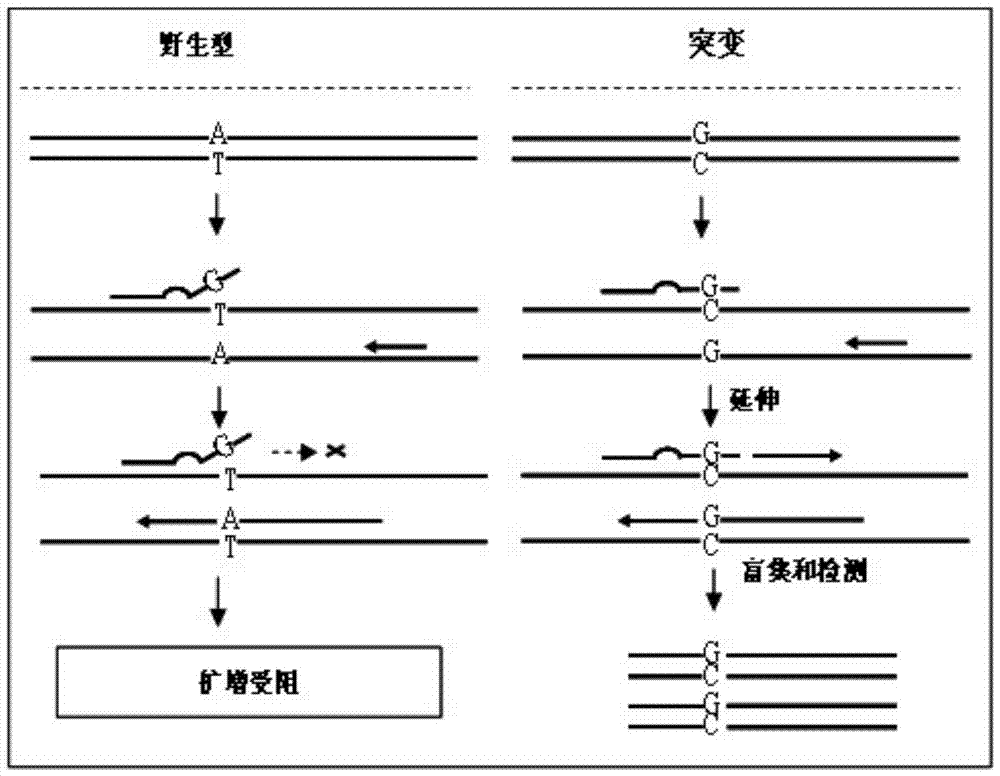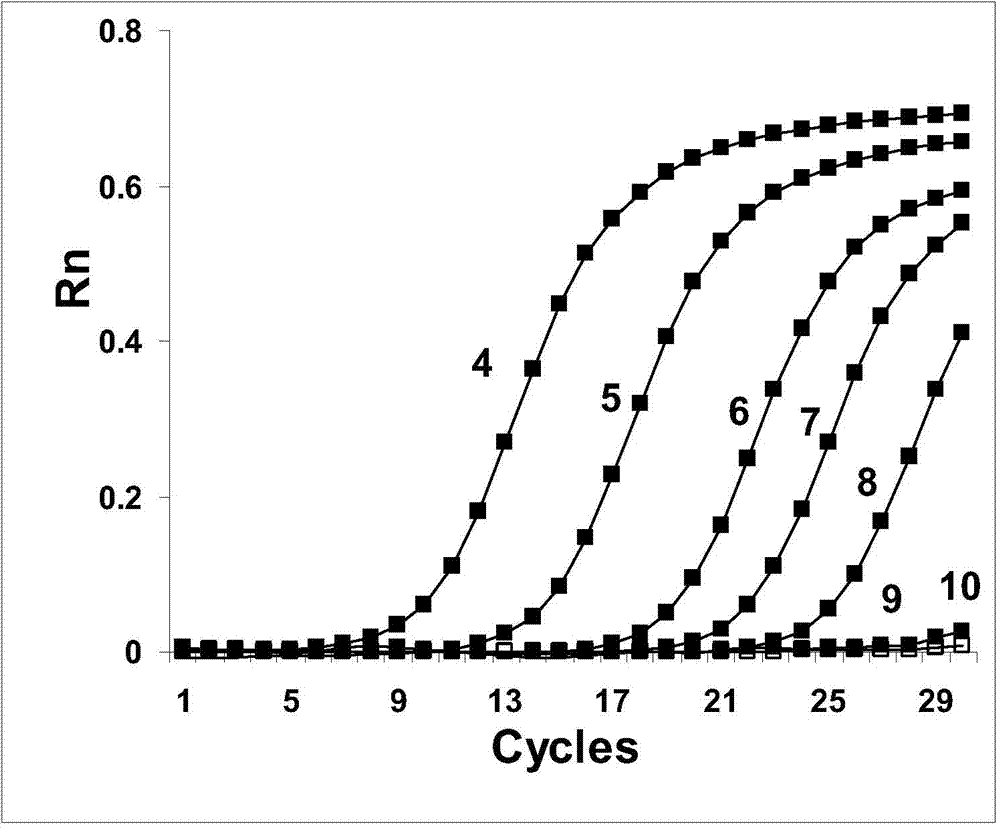Gene mutation detection primer and application
A base and base pairing technology, which is applied in the determination/inspection of microorganisms, biochemical equipment and methods, DNA/RNA fragments, etc., can solve the problems of weak detection ability, weak sensitivity, weak specificity, etc., and achieve inhibition The effect of nonspecific amplification
- Summary
- Abstract
- Description
- Claims
- Application Information
AI Technical Summary
Problems solved by technology
Method used
Image
Examples
Embodiment 1
[0042] For hepatitis B virus C gene detection, this example uses the method of the present invention to design and detect 180 drug resistance sites.
[0043] Material:
[0044] material name
company
Hotstart Taq polymerase
Shanghai Sangong
Mg2+
Shanghai Sangong
PCR buffer
Shanghai Sangong
dNTP mix (dA, dG, dC, dT)
Promega
[0045] 1. Sample and standard preparation:
[0046] Accept clinical samples, 200ul serum, add proteinase K and buffer AL, mix for 15s, digest at 56°C for 10 minutes, mix again, add 200ul absolute ethanol, mix for 15s, carefully transfer the liquid into a 2ml spin column, Centrifuge at 6000g (8000rpm) for one minute. Add 500ul buffer AW1, centrifuge at 6000g (8000rpm) for 1 minute, open the lid carefully and add 500ul AW2, centrifuge at 6000g (8000rpm) for 1 minute, centrifuge the empty tube at 20000g for 3 minutes, add 50ul ATE buffer and the center of the membrane, room temperature for 10 m...
Embodiment 2
[0068] Detection of lamivudine HBV rtL180M resistance site.
[0069] my country is the hardest-hit area of hepatitis B virus infection. The current clinical treatment of chronic hepatitis B is to inhibit virus replication, normalize transaminases and improve liver tissue. The long-term effective method is the treatment of antiviral drugs. These drugs, such as lamivudine and adefovir, can effectively inhibit the replication of hepatitis B virus. However, due to the lack of a rigorous correction system for the transcription and replication of hepatitis B virus, drug-resistant mutations are likely to occur during antiviral drug treatment, and the drug resistance rate can reach 22% after two years of treatment. During long-term antiviral drug treatment, there is a lack of highly sensitive and Accurate detection methods enable drug-resistant strains to survive and reproduce in large numbers, resulting in treatment failure and considerable losses to the patient's body and economy....
PUM
 Login to View More
Login to View More Abstract
Description
Claims
Application Information
 Login to View More
Login to View More - R&D
- Intellectual Property
- Life Sciences
- Materials
- Tech Scout
- Unparalleled Data Quality
- Higher Quality Content
- 60% Fewer Hallucinations
Browse by: Latest US Patents, China's latest patents, Technical Efficacy Thesaurus, Application Domain, Technology Topic, Popular Technical Reports.
© 2025 PatSnap. All rights reserved.Legal|Privacy policy|Modern Slavery Act Transparency Statement|Sitemap|About US| Contact US: help@patsnap.com



